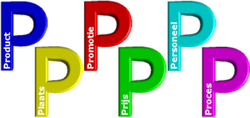 Many an “Indie” author will tell you that the hard part of being an author isn’t the writing of the book, no matter how hard that seemed at the time. No, the hard part is actually selling the book so someone can read it. Let’s face it, it doesn’t matter how good the book is, if no one knows it exists then they can’t buy it. Readers rarely, if ever, just stumble across a new author’s work. The book may occasionally appear on Amazon in search results, but that is the equivalent of hoping to hit a fish by throwing a stone into the sea. If the book has no sales history, it will be so far down the results that you would need a submarine to reach it. We have published many blogs on book marketing, but we thought it might be timely to reiterate the key messages.  We’ll start with the marketing mix – the 6 Ps. Some marketing blogs talk about the 4Ps, but we’re a bit like Spinal Tap, our Ps go all the way up to 6 (younger readers may not get that reference). These are:
You might think that ’promotion’ is the most important part of the marketing mix, but it isn’t. It’s people. You can promote your ‘product’ as much as you like, but if you aren’t reaching the right people, then you are wasting your time and, probably, your money. For this reason we are going to discuss each of those Ps in the order we think is of most importance.  The most important “people” is you. It is your knowledge of marketing which will sell books and it is your lack of knowledge that will hold you back. So, the most important thing we can say at this point is to invest in your “people” and learn how to do it properly. You don’t have to undertake a 3 year marketing degree course, but you do need to learn. There are free courses on FutureLearn and there a lot of books on book marketing available. Invest in yourself before you spend money on paying others to do things for you. The rest of your ‘people’ are the people who read books similar to the ones you write. They are the ones you need to identify and engage with on social media. I say ‘engage’, because if you just ‘promote’ you will lose their interest very quickly. Yes, you can promote, but only as a small part of engagement. You need people to want to follow you, which means having something interesting to say. And if you doubt that, consider this – you’re reading this blog, aren’t you? That is part of our ‘engagement’ with you. Paying companies to blast out posts about your book won’t get you sales -despite their promises of having a gazillion followers. Because only the posts that reach the sort of people that read your sort of books are of any use and only you can identify and engage with those people.  We’ll assume from the start that your book is well written, has a good plot, interesting characters, has been properly edited, proofread and corrected. It is therefore fit for purpose. Only you and your Beta Readers can judge that. So that part of the next P, ‘product’, is OK. After that the most important part of the product is the cover. Despite the warning in the old proverb, people do judge books by their covers. So, yours must be right for your genre. A picture of a woman in a big bonnet walking through a field of daisies isn’t going to sell many sci-fi books. That cover image is what is going to attract people’s attention, so it has to be eye catching and genre appropriate. The second thing about the cover is that it should tell the reader a little bit about what is happening in between the covers. Call it a visual representation of the plot. A picture is worth a thousand words, or so they say, so make sure that the picture on your cover is using those thousand words to best effect.  What about price? How much should you charge for your book? If you are a big-name author, you (or, more likely, your publisher) can get away with charging £13.99 ($15.99) for your book. If you are an Indie author, don’t even think about it. There is some interesting psychology related to pricing. On the one hand, people expect to pay more for a quality product. On the other hand, everyone loves a bargain, even readers. Where you pitch the price of your book is therefore important. Price it at 99p (99c) and readers may think "It can’t be very good if they’re practically giving it away". On the other hand, price it at £13.99 and readers may say "I’m not going to pay that much to read a book by an author I’ve never heard of". We price our ebooks at £4.99 - £5.99 ($5.99 - $6.99) and that seems to be about right for us. But the key messages are (a) don’t undersell yourself and (b) don’t price yourself out of the market. There are times when you can price at 99p, but those are for promotional purposes. That shouldn't be your basic price.  When we talk about ‘place’ we mean the places where you promote your books rather than the places you sell them. We’re going to assume that your book is listed on all the relevant websites and, for those of you that don’t want to give money to Jeff Bezos, all we can say is that if you aren’t on Amazon, you aren’t anywhere. Internet searches always place Amazon at the top of the results, so if someone is actually trying to find your book, that is where it will appear first – and perhaps the only place on the first page of results. But in our terms, place means your choice of social media site(s) on which to engage with readers and your choice is important. If you want to reach young people, then Facebook isn’t the place and X (aka Twitter) is iffy at best, because young people are always on the newest, trendiest platforms. Only 51% of social media users between ages 12 and 18 use Facebook – the second smallest group.  So, you need to do some basic research to make sure the platform(s) you are using are the right ones to reach your target audience. But don’t rely on social media alone. Local newspapers and radio stations are always looking for content, so a short item (written by you) will fill some column inches for them or an interview will fill five minutes of radio time. But, again, don’t expect them to find you. You have to reach out to them. Also, check your local community resources (libraries, schools, churches, clubs, societies, etc) for events where you can go along and talk about your work (and maybe sell a few copies). One thing about newspapers and other media – don’t pay to go chasing it. If it is offered, great, but the sales it brings aren’t worth the money you have to pay PR people to get it for you.  Promotion can be anything from a Facebook post to a video, podcast, a free extract or paid for advertising. I don’t aim to cover all of those. Instead I’ll focus on the one that you have to pay for – advertising. Social media (and Amazon) has given us all the ability to run relatively cheap advertising campaigns. But which ones work depends on the advertising channel you use. There is no point in paying for an advert on Facebook if hardly any of your target audience ever uses Facebook. We can tell you where we get the best return on our advertising investment – but that would be more confusing because we use different platforms for different books, because different audiences use different social media platforms. What we can tell you is that each platform (including Amazon ads) has its peculiarities when it comes to advertising. Whether it’s how you use keywords, what images you use, what text you use to accompany the images, etc are all different on different sites. It pays to advertise but you have to know how to advertise on each specific platform you use in order to get the best results.  You have to learn to use each site. There are myriad books on the subject and videos on YouTube. Read and watch before setting up your first ad and you may save yourself a lot of money and heartache. Test your ads before you commit a large budget to them. A few £ or $ spent running a test can save you a lot more in the longer term. One tip we will give you is that Google Ads don’t seem to work. Not for us and not for the gurus we have consulted. Google Ads may be great for some types of product, but they don’t seem to work for books. But one important detail about advertising. Make sure your advert includes the following:
 You’re now wondering what I’m going to say about ‘process’. Actually, not a lot. I’ve tried to get the messages in this blog in the order you need to address them. That’s about all the ‘process’ you need to worry about at the moment. But if you want to be successful your ‘process’ must also include research:
Without that research, you may as well be standing on a street corner shouting ‘buy my book’. And you will be no more successful. And, if doing research sounds like too much hassle, then good luck getting people to stumble across your book by chance. If you have found this blog informative or entertaining (or both) then make sure not to miss future editions by signing up for our newsletter. We’ll even send you a free ebook for joining. Just click on the button below.
0 Comments
Leave a Reply. |
AuthorThis blog is compiled and curated by the Selfishgenie publishing team. Archives
June 2025
|

 RSS Feed
RSS Feed